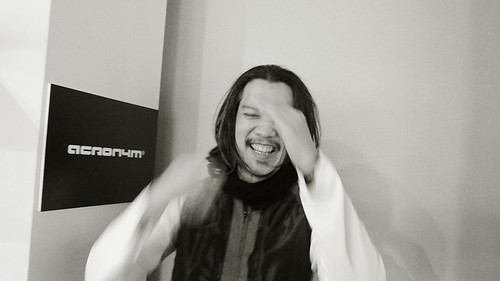OOPS
OOPS is Meta’s online operations support system. OOPS provides access to user accounts like a sys admin on a company IT network. If you’re a Meta employee, friends or family you can get hold of a concierge service to solve account related problems. It isn’t available to outsiders.
It seems that OOPS has been used to reassign or disable accounts for profit and access wasn’t as controlled as it should be.
The Meta OOPS scandal made me wonder if OnlyFans performer Kitty Lixo had actually been gaslit about her account by Meta employees, rather than being helped out in return for sex. Lixo has gone from having an Instagram account with 199,000 followers to two smaller accounts with under 20,000 followers combined at the time of writing.
“We met up and I f**ked a couple of them and I was able to get my account back two-three times,” Kitty Lixo said, recommending others with locked accounts to continue reaching out to the platform for eventual ban reversal.
OnlyFans Star Says She Slept With Meta Employees to Get Instagram Unbanned by Nick Mordowanec (May 20, 2022) Newsweek
China
Morgan Stanley on how the 20th Party Congress was likely to affect the economy China Outlook: Thoughts on the Market | Morgan Stanley and more here from SOAS: Xi’s vision for China after the 20th Congress – SOAS China Institute
Chinese owner of British Steel breaks investment promise | Daily Telegraph
China’s Birth Rate Fell to Another Record Low in 2021, Gov’t Confirms despite measures taken by the government to increase the birth rate
Ethics
Offered without comment: Keurig Dr Pepper In Midst Of PR Agency Review – one-year payment terms leave agencies unimpressed.
Finance
Binance was soliciting SG users without license, MAS says | Techinasia
Germany
VW and Mercedes’ electric-car ambitions run into trouble forcing the German firms to re-evaluate strategies | South China Morning Post – New VW CEO Oliver Blume is re-evaluating the strategies set out by former CEO Herbert Diess after a number of setbacks. Mercedes’ struggles with its top-of-the-line EV model in China could set back plans to go all-electric in key markets by 2030 – the Chinese electric market could be the graveyard of the German car industry
Hong Kong
‘Here to stay’: Colchester’s Hongkongers on making new lives in the UK | UK news | The Guardian
Ideas
Subscription Pricing Coming to Features Your Car Already Has – a $25-per-month charge for advanced cruise control or $10 to access heated seats? What if those charges continued long after your car was paid off? …As vehicles become increasingly connected to the internet, car companies aim to rake in billions by having customers pay monthly or annual subscriptions to access certain features. Not content with the relatively low-margin business of building and selling cars, automakers are eager to pull down Silicon Valley-style profits. For automakers, the advantage of this model is clear. …Not only do they get a stream of recurring revenue for years after an initial purchase, they can hope to maintain a longer-term relationship with the customer and build brand loyalty, said Kristin Kolodge, vice president and head of auto benchmarking and mobility development at J.D. Power. – I suspect that this will only work if every car was on a lease agreement and if that’s the case then there are lots of negative impact from old cars that need to be written off that outweigh this business model. Secondly, there is an expectation that all of the vehicle will conform to Moore’s Law.
Innovation
Leading scientist calls on China to share gene data
Real time tool detects deep fake videos in milliseconds …
What about the layoffs at Meta and Twitter? Elon is crazy! WTF??? | I, Cringely – I first arrived in Silicon Valley in 1977 — 45 years ago. I was 24 years old and had accepted a Stanford fellowship paying $2,575 for the academic year. My on-campus apartment rent was $175 per month and a year later I’d buy my first Palo Alto house for $57,000 (sold 21 years later for $990,000). It was an exciting time to be living and working in Silicon Valley. And it still is. We’re right now in a period of economic confusion and reflection when many of the loudest voices have little to no sense of history. Well my old brain is crammed with history and I’m here to tell you that the current situation — despite the news coverage — is no big deal. This, too, shall pass – vintage Bob Cringely
Japan
Sony-Honda venture plans to tap entertainment prowess for its electric cars | Financial Times
Korea
The Seoul Retail Edition – by Guest Contributor
Media
Disney: return of the Jedi brings new hope — temporarily | Financial Times
How Did AT&T’s $100 Billion Time Warner Deal Go So Wrong? – The New York Times
Online
Meet Unstable Diffusion, the group trying to monetize AI porn generators | TechCrunch
11 (and counting) things journalism loses if Elon Musk destroys Twitter | Nieman Journalism Lab
Software
SwiftKey is unexpectedly back on iOS – The Verge
Technology
Qualcomm steps up Oryon battle with ARM | EE TImes
Telecoms
Meta implements new timing protocol in its data centers – SiliconANGLE
Tools
Kiwix on the App Store – this is available on Mac and iOS app stories. It allows you to view an offline version of Wikipedia, Project Gutenberg and Khan Academy modules. Ideal for when you’re unplugged.
Where to find Apple’s official 872-page iPhone user manual you never knew existed | BGR




